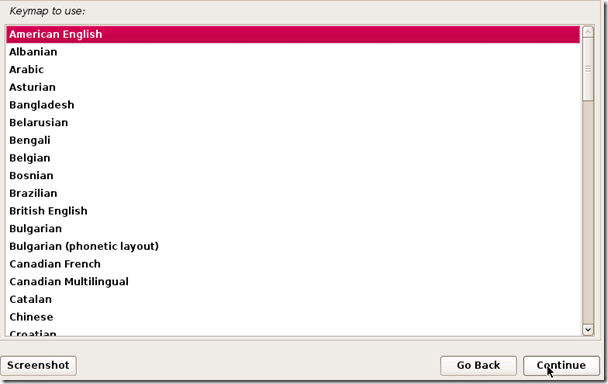This tutorial will walk you through the difficult process of installing Kali Linux in VMware Player, a free virtual machine manager that can be downloaded from www.vmware.com.
First we need to download Kali from http://kali.org/downloads/. If you have a 64-bit capable computer , then you probably will want the 64-bit version of Kali for performance reasons.
Expand the drop down menu’s to find the version you need. Select the 64-bit version ONLY if you have a 64-bit computer.
When Kali has finished downloading, open VMware Player and click Create a new virtual machine.
Step 1:
First we need to download Kali from http://kali.org/downloads/. If you have a 64-bit capable computer , then you probably will want the 64-bit version of Kali for performance reasons.
Expand the drop down menu’s to find the version you need. Select the 64-bit version ONLY if you have a 64-bit computer.
When Kali has finished downloading, open VMware Player and click Create a new virtual machine.
Step 3:
In the window that opens, select Installer disc image file (iso) and browse to the location of and select the Kali Linux ISO file that you just downloaded.
Once you have selected the file, click Next.
Step 4:
In the next step, select a name for the virtual machine. I’m going to name it Tutorial Kali for this tutorial. You also need to select a location for it, I recommend creating an extra drive of minimum 20GB in your hard disk(other than in which your Windows is installed). Then click Next.
Step 5:
Next step, you need to select a maximum size for Kali. I recommend doing at least 30 GB’s as Kali tends to expand over time. After you’ve entered your desired value (no less than 20 GB) change the next option to Split virtual disk into multiple files and click Next.
Step 6:
In the next window, if you want to customize some hardware settings like memory used in the process(it should be selected atleast 512mb). This is for performance. so click on the Customize Hardware… button.
*Note, you should give a virtual machine a maximum of half the RAM installed on your computer. If your computer has 4 GB of RAM, then the max you want to slide it to is 2 GB. If your computer has 8 GB, then you can go to a max of 4 GB etc..
otherwise click on finish button to finalize settings.
After you click Finish the window will close and the new virtual machine file will be added to the VM library. Now all we have to do is start Kali and install it! To do this, highlight the name of the newly created virtual machine by clicking on it, and click Play virtual machine in the right pane.
This will start Kali for the first time.
Step 8:
At the boot menu, use the arrow keys to scroll down to Graphical install and hit enter.
Step 9:
The next screen will ask you to select your preferred language, you can use the mouse to select this, then click Continue.
Step 10:
On the next screen, select your location and hit Continue.
It’ll now ask you for your standard keymap. If you use the standard American English keyboard, then just click Continue.
Step 11:
Wait until Kali finishes detecting the hardware on your computer. During this, you might be presented with this screen:
Just hit Continue and select Do not configure the network at this time on the next screen.
Step 12:
You will now be asked to supply a hostname, which is kind of like a computer name. You can enter anything you want, or you can just leave it as kali. When you’re done, hit Continue.
Step 13:
Kali will now ask you to enter a password for the root (main) account. Make sure you can easily remember this password, if you forget it, you’ll have to reinstall Kali. Hit Continue after you’ve enter and re-entered the password of your choice.
Step 14:
The next step will ask you for your time zone, select it and click Continue.
Step 15:
Wait until Kali detects the disk partitions. When you are presented with the next step, select Manual, then click Continue.
In the next window, select the partition created on the selected disk and hit Continue.
Step 16:
In next wizard choose Yes to create new empty partition table on this device and hit Continue.
Free space will be created for the selected disk, hit Continue.
Step 17:
Now choose Create new Partition, and select the desired size on the disk.
Note: You need to create 3 partition of the drive.
1. Select minimum 3GB for Swap Area(Select Use As: swap area). Hit Done Setting up Partition.
2. Select 8-10 GB for Home(Select Use As: Ext & Mount point: /HOME). Hit Done Setting up Partition.
3. Select remaining for main(Select Use As: Ext & Mount point: / ). Hit Done Setting up Partition.
Now select Finish Partition and write changes to disk and hit Continue.
Kali will now start installing! Wait until it has completed, this might take upwards of 30 minutes.
Step 18:
Alright, Kali has finished installing and now you are presented with a window that asks you about a network mirror. You can just select No and hit Continue.
Step 19:
After a few minutes, the installer will ask you if you want to install GRUB boot loader. Click Yes and Continue.
Step 20:
The installation should now complete, and you’ll be shown with the following notification message:
Click Continue.
Step 21:
After it restarts, login to it with the user name root and the password that you created earlier.
You’ve successfully installed Kali Linux in VMware.


























No comments:
Post a Comment